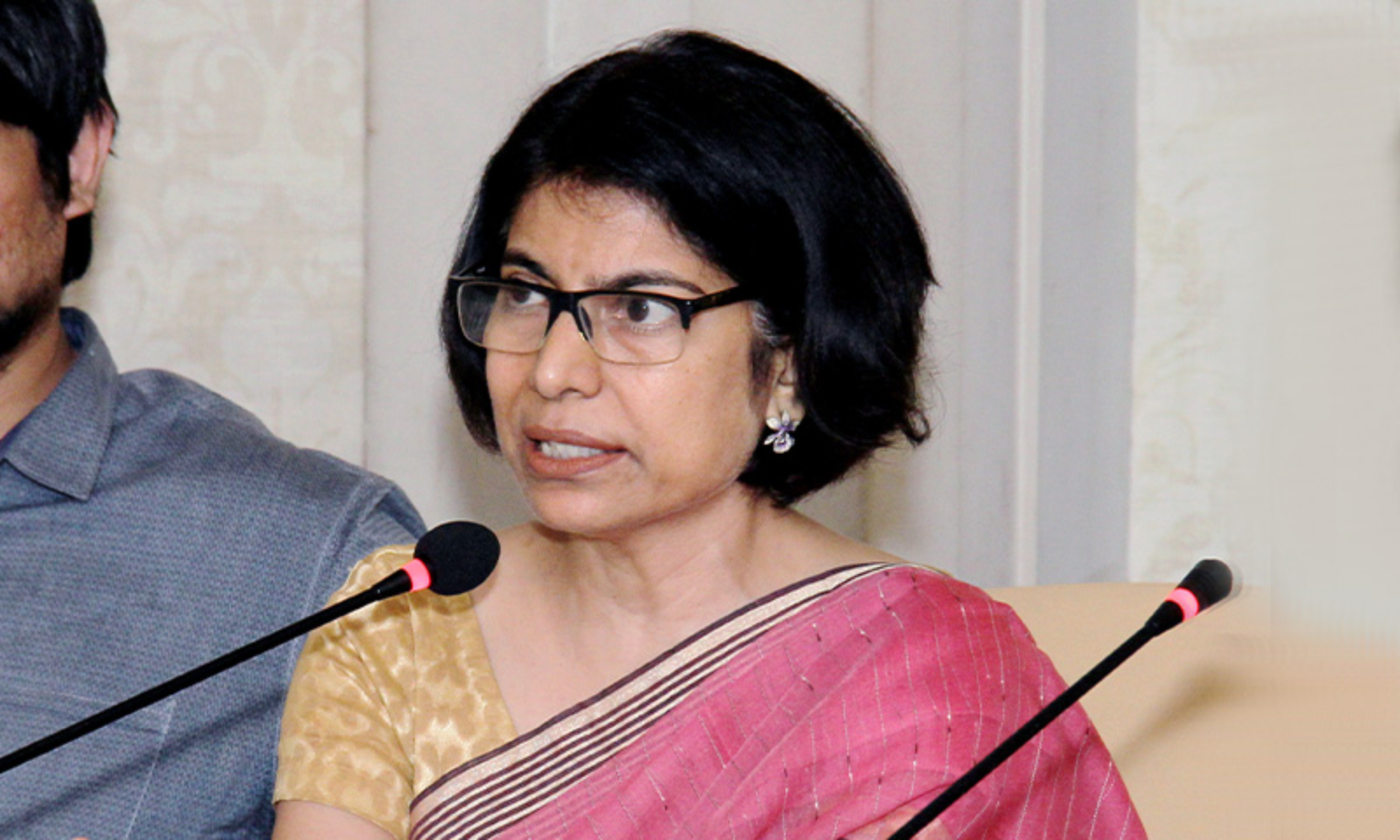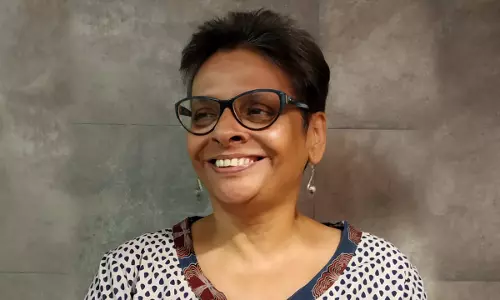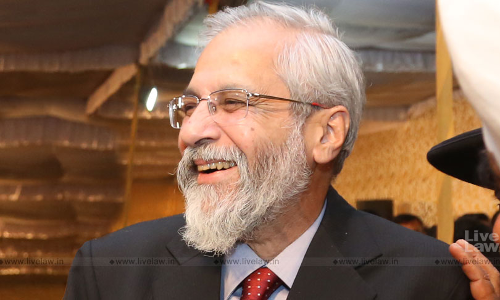Prosecution As A Rule Not Desirable In Child Marriages; Need To Re-Imagine Remedie' : Interview With PLD

Live Law interviewed Madhu Mehra, lawyer heading the research and training initiatives at Partners for Law in Development (PLD), a legal resource group on women's rights and social justice in India. Excerpts from the interview on the topics of child marriage, proposal to increase age of marriage etc: There is an increasing attention on law relating to child marriage. Could...
Live Law interviewed Madhu Mehra, lawyer heading the research and training initiatives at Partners for Law in Development (PLD), a legal resource group on women's rights and social justice in India.
Excerpts from the interview on the topics of child marriage, proposal to increase age of marriage etc:
- There is an increasing attention on law relating to child marriage. Could you outline the scope of the legal regime on child marriage?
There is more than one law relating to child marriage. A primary central law along with religion-based family laws and the penal laws have a bearing on child marriage.
The main law, the Prohibition of Child Marriage Act (PCMA), 2006 sets out the minimum age of marriage at 18 years for a female and 21 years for a male, and defines child marriage to be where one or both parties are underage. It addresses three contexts connected with 'child marriage'. The first, in cases of an impending child marriage, law empowers certain categories of persons to prevent the marriage from being conducted. The second pertains to child marriages that take place in spite of the law. Here, the minor wife's matrimonial rights are secured, by treating the child marriage as valid though voidable. The law gives the minor party the right to separate and claim maintenance, and to nullify the marriage within two years of attaining the age of majority. The third situation relates to marriages involving kidnapping, enticement or trafficking, and these being grave offences are treated as void, having no validity in law.
In general, although underage marriages are treated as valid, the adults involved in conducting such marriage may be prosecuted and punished – while the minor is protected by matrimonial rights and the choice of opting out of the marriage. The law designates district level functionaries, the Child Marriage Prohibition Officer (CMPO), to raise awareness and initiate legal action to prevent underage marriages. This central law has been amended in Karnataka in 2017 and Haryana in 2020, to declare all underage marriages as void without exception. That is to say, even when such marriages occur, they lack legal recognition. Other states are also considering making child marriages void.
The religion based personal laws set out conditions (including minimum age) for a valid marriage, and all except the Parsi law, treat underage marriage as valid though voidable in limited circumstances. A marriage has to be valid under personal laws for it to be treated as valid under the PCMA. The offence of statutory rape is also relevant to child marriage. The Protection of Children from Sexual Offences Act (POCSO), 2012 as well as the Indian Penal Code (IPC), 1860 set 18 years as the age of sexual consent, which in effect, criminalizes sex with an underage wife regardless of consent. An adult or minor husband of a minor girl may face additional charges of statutory rape in a given case.
- How effective is the law? Since Partners for Law in Development has undertaken research on the functioning of the law in courts and outside it, could you highlight the findings of how the law works.
The fact that child marriages remain prevalent is not sufficient to conclude that the law needs to be made stringent or declare child marriage void. Recommendations for law reform have to correlate with findings in relation to how the law is applied and implemented.
PLD has undertaken three studies in relation to child marriage law. A case law analysis[1] spanning a decade (from 2008-17), shows that different legal remedies (constitutional, civil and criminal) are used largely against girls who elope, or marry against parental approval. We found that 65% of all the 83 cases in our data involve parents using the law against eloping daughters, seeking their custody, prosecuting the husband for rape and kidnapping, or seeking to nullify the marriage. The remaining 35% of the cases pertain to arranged marriage cases (of underage boys and girls), largely seeking to nullify marriages which have broken down because of domestic abuse, dowry or incompatibility. Cases attempting to stop an impending marriage from occurring are negligible.
A key finding is that 'age' of marriage is not the primary driver of legal action, though it is necessary to gain entry into the legal system. Ironically, the law is used by the girls to assert the validity of their (choice) marriage, and only rarely, use law (with parental support) to nullify an arranged marriage that has broken down. That the girls have no access to the law in situations of forced marriage, a widespread reality in India, which is one of the biggest flaws in the law. There are scarcely any cases filed by the CMPO, which points to an ineffective implementation machinery.
Despite a clear weaponisation of law by parents, the courts by and large uphold the choice marriages, based on their legal validity under personal law and what the girl wants. In these situations, the courts may assign the custody of the girl to either a shelter, matrimonial or parental home. The husband's in such cases are likely to struggle with prosecutions for rape and kidnapping, which entails periods of detention before bail is allowed.
A qualitative multi-city study of the lives of 16 girls in self-arranged marriages[2] suggests that poverty, burden of housework, mobility restrictions and prospect of forced marriage to be key triggers of elopement in girls. Criminal proceedings invariably follow elopements, resulting in girls being consigned to shelter or parental homes, and boys in detention or apart from their minor wife. Rather than restore educational and empowerment opportunities, the law disrupts lives, and causes lasting isolation, guilt, and stigma on the lives of girls.
Despite these dismal findings, the law is useful, as shown by a third study documenting strategies used by frontline workers and grassroots organisations in helping girls avoid or exit child marriage.[3] Formal access to legal system is rife with challenges for girls – not least because they're likely to be dissuaded from taking action or face backlash as their plans inevitably get revealed to their parents. Yet, when such cases come to the frontline workers, they use force of the law to secure support of the child protection system, the administration, and the police to transfer the girl to shelter home, and to negotiate informally with the family and the community to call off the marriage. These informal interventions often go beyond delaying the marriage to secure family agreement for the girl's education, participation in youth collectives, or in learning skills. The awareness of minimum age of marriage is widespread, and just this fact allows girls to negotiate themselves or through their school teachers or frontline workers – in ways that are unquantifiable, yet important.
- What are the weaknesses in the law that need attention, and how do you assess the relevance of declaring child marriages void ab initio?
The law plays an intangible preventive role through the awareness on minimum age, possibility of redress and state action. Yet, access to law for girls to prevent or prosecute forced marriage is impossible as the evidenced by the research findings. The CMPOs, although designated to implement the law, are inactive for various reasons. These officers are assigned additional charge under the PCMA, for which they lack adequate capacities and being stationed at the district level, have little knowledge of what transpires in villages.
Prosecution as a rule is also not desirable in relation to child marriage. It results in imprisonment for parents and destitution of children. Calling off an arranged marriage results in long term social and economic boycott of the girl's family (and stigmatization of the girl), often attracting steep customary fines. This backlash also compels frontline workers to opt for negotiation before resorting to prosecution.
There is a need to reimagine what redress might mean in relation to child marriage – focusing on empowerment of girls, in addition to gradation of responses to child marriage. National data shows a shift towards early rather than child marriage (the increasing mean age of marriage is 19 years for girls)[4] and gradual decline in prevalence of underage marriage[5]. Since early marriage stems from poverty and insecurity, the law can only play a complementary rather than a primary role, and it must entitle support services and enabling opportunities for girls vulnerable to or in marriage, rather than be limited to prosecution.
Any law reform measure must address the unintended harm of the law. In that, the most serious concern would be to check the retaliatory use of law, by restoring the age of consent to 16 years (as it was prior to enactment of POCSO in 2012) instead of 18 years as it is now. Other studies corroborate the use of POCSO against consenting couples. A study of 2788 cases under POCSO across 5 states, by the Centre for Child and the Law, in National Law University of India, Bangalore (CCL-NLSIU, 2018)[6], revealed that romantic cases i.e., cases in which the prosecutrix admitted to a relationship with the accused constituted 21.2 percent in Andhra Pradesh, 15.6 percent in Assam, 23 percent in Delhi, 21.8 percent in Karnataka (in 3 districts), and 20.5 percent in Maharashtra.[7]
Law reform in relation to child marriage cannot be divorced from the POCSO, which lends itself to retributive use in elopement cases. The Independent Thought verdict (2017) extends statutory rape prosecutions in relation to the minor wife, by striking down the exception for marital rape of wife between 15-18 years, irrespective of consent. Evidence indicates that these prosecutions are initiated only in elopement cases, which inflicts disproportionate harm on the couples. The obligation to mandatorily report sexual activity of minors under POCSO obstructs the access of girls to counselors and health care providers for safe institutional abortions and deliveries. Fearing prosecution of their husbands and families, they resort to unsafe options, and are thus put to greater risk. The age of consent must be 16 years (as was the case before 2021) insofar as it relates to consenting non-coercive relations between peers.[8]
Law reform in relation to child marriage must be premised on best interests of the child as defined through the prism of two salient principles of the Convention on the Rights of the Child – that of 'evolving capacities' and that of the child's 'right to be heard'.[9] Responses to child marriage must be centred on the minor girl (the primary victim of child marriage), rather than seek punitive solutions that inflict harm on young people.
Making underage marriages void will neither stop the practice nor empower girls. On the contrary, it will hurt married girls most. Judicial discretion will no longer be available to allow graded context specific responses. In Karnataka where the law treats child marriage as void, the practice continues. So long as poverty, insecurity and lack of opportunities for girls exist, early marriages will continue to occur. Law can only be one of the many interventions. In the limited role that law plays, it is important that it strengthens girls, their voices and mandate support services available to them.
Making child marriage void will deny legal status of wife to girls in conjugal life, and deprive them of matrimonial rights, even as it liberates husbands of legal liabilities for desertion or second marriage. The law must address its present limitations and expand legal redress to entitle girls (at risk of and within marriage) to opportunities, health care information and services, and skill development to expand the nature of legal redress offered.
- The government proposed increasing the minimum age of marriage for women to 21. Do you think this will help girls?
First, it must be clarified is that minimum age of marriage does not mean mandatory age of marriage, nor does it mean ideal age of marriage. The present minimum age of marriage at 18 years does not compel women to marry at 18. It only signifies that it is legal to marry hereon, without fear of criminal prosecution or risk to validity of marriage.
With 18 being the age of majority, persons gain legal capacity to vote, to enter contract and accordingly, the right to marry. So, it marks legal capacity but not an ideal age of marriage. Ideally, girls should not only marry much later, but must also have the choice of whether or not to marry. This is a concern because in India marriage is a necessary means for obtaining social status and economic security for women. Increasing age of marriage does not alter the compulsory nature of marriage for girls and women. Transforming this reality depends on increasing opportunities and resources for girls in poverty, ensuring safety, mobility and livelihood opportunities, and removing stigma around female sexuality.
To increase minimum age of marriage to 21 will mean that the girls will have no say in their personal matters until early adulthood. The overwhelming evidence of retaliatory use of law by parents against choices of girls, must warn us of the harm of increasing minimum age, as it will expand the period within which parents may use the law to exert patriarchal control rather than ensure rights of girls. State protectionism of such kind curtails rights of women to life, liberty and autonomy, and must be rejected.
PLD is also the secretariat of the National Coalition Advocating for Adolescent Concerns (NCAAC).PLD Websites:
https://pldindia.org/advocating-for-adolescent-concerns/
[1] Who Uses the Prohibition Of Child Marriage Act 2006 (PCMA) Most And Why? Findings from Case Law Analysis (2008 -2017), Partners for Law in Development, 2020.
[2] Why Girls Run Away to Marry: Adolescent Realities and Socio-Legal Responses in India, Adolescent Sexuality and Early Marriage Series Volume 1, Partners for Law in Development, 2019.
[3] Grassroots Experiences of Using The Prohibition of Child Marriage Act, 2006, Adolescent Sexuality and Early Marriage Series Volume 2, Partners for Law in Development, 2019.
[6] Implementation of the POCSO Act, 2012 by Special Courts: Challenges and Issues, Centre for Child and the Law, National Law School of India University, 2018.
[7] Three other studies corroborate these findings- Implementation of the POCSO Act: Gaps, Goals and Challenges, Study of Cases of Special Courts in Delhi & Mumbai (2012-2015), UNICEF, FACSE, HAQ: Centre for Child Rights, 2017; The Early Marriages in Conflict with law and Society: The case of young girls in Gujrat, ANANDI, 2017; and Understanding Dynamics of Sexual Violence: Study of Case Records, CEHAT and MCGM, 2018.
[8] Submissions to the MWCD: In The Context Of Early Marriage and Age Of Consent, National Coalition For Advocating Adolescent Concerns, 2020.
[9] UN Committee on the Rights of the Child (CRC), General comment No. 12 (2009): The right of the child to be heard, 20 July 2009.




